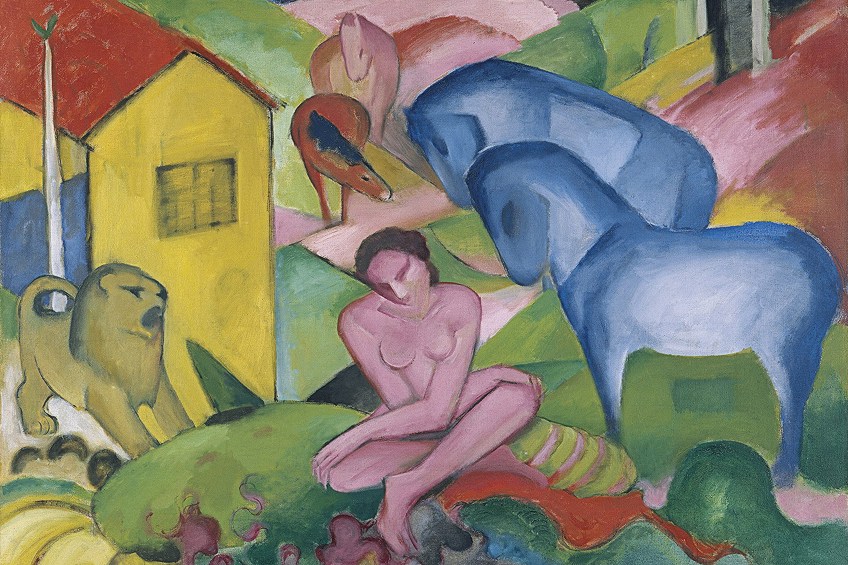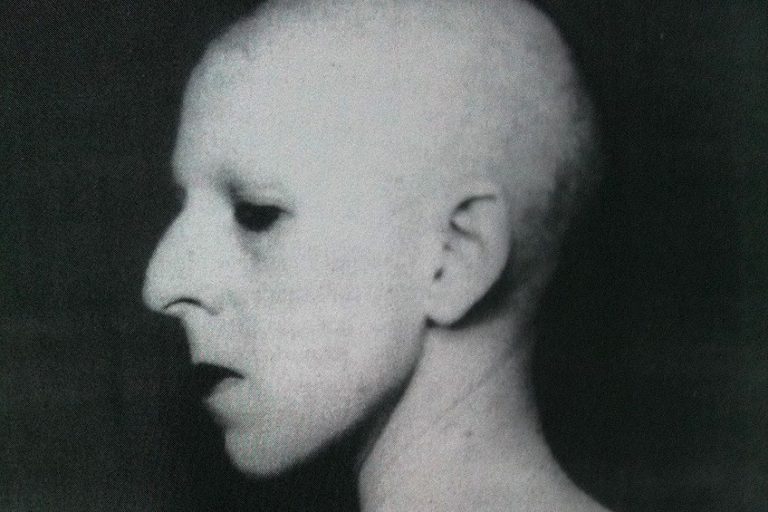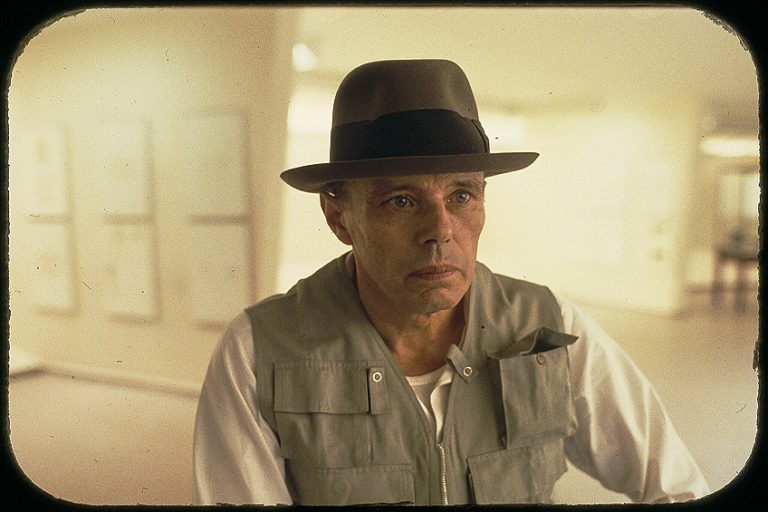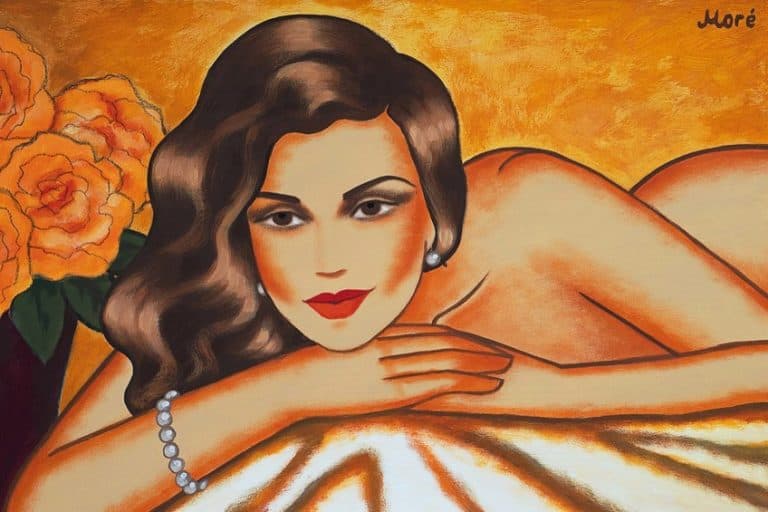Franz Marc – A Brief Look at This Famous German Painter
One of the most famous paintings from the German Expressionist movement must be that one with the blue horses – a painting many of us have come across before and remember because of the unnatural coloring for a natural subject. This was painted by the German painter, Franz Marc, who we will be exploring in the article below. Along with many of his other artworks that show why he used non-localized colors and how he was a leading figure of Expressionism.
Artist In Context: Who Was Franz Marc?
| Date of Birth | 8 February 1880 |
| Date of Death | 4 March 1916 |
| Country of Birth | Munich, Germany |
| Art Movements | German Expressionism (Der Blaue Reiter) |
| Genre / Style | Abstract, Symbolic |
| Mediums Used | Woodcut, Lithography, Gouache, Oil paintings |
| Dominant Themes | Animals, Nature, Color Symbolism |
Franz Moritz Wilhelm Marc, of just Franz March, was a German painter well known for his large and bright areas of colors, subject matter that consisted primarily of animals and nature, which were infused with his symbolic and spiritual beliefs. He was one of the leading artists for the Expressionist art movement in Germany and whose artworks have stood the tests of time, through two World Wars, and some have also sold for millions of dollars.
Furthermore, there were numerous art styles inspired by Franz Marc and the way he utilized colors and symbolism.

A common question that presents itself when we explore Marc’s life is, “How did Franz Marc die?”. Many artists who lived during the early 1900s were faced with the traumas of war and some of them also served in the war, including Franz Marc, who served in World War I. He died in the Battle of Verdun in 1918 and will always be remembered as not only an artist that paved the way for many modern artists but also as a brave man.
The Birth and Early Life of Franz Marc
Franz Marc was born in Munich in Germany on 8 February 1880. He was born into a family that already had an artistic background due to his father, Wilhelm Marc, being a landscape painter who also studied at the Academy of Fine Arts in Munich. Marc’s mother was Sophie Marc (her maiden name was Maurice) and she was reportedly from Alsace, which is in France and borders Switzerland and Germany. He had a brother named Paul Marc who was older than him, and it was just the two siblings in the Marc family.
Marc would have received most of his artistic training from his father growing up.
Education and Career
Many sources state that Franz Marc wanted to study theology; his brother studied theology, and he (Franz) applied to study at the Ludwig Maximilian University in 1899. He reportedly applied to study philology. During this time, he also served a year in the military, which was in Lagerlechfeld. It was in 1900, when Franz Marc was 20 years old, that he started his studies at the Munich Academy of Fine Arts, where his father studied and decided not to pursue any further studies in spiritual or religious disciplines.
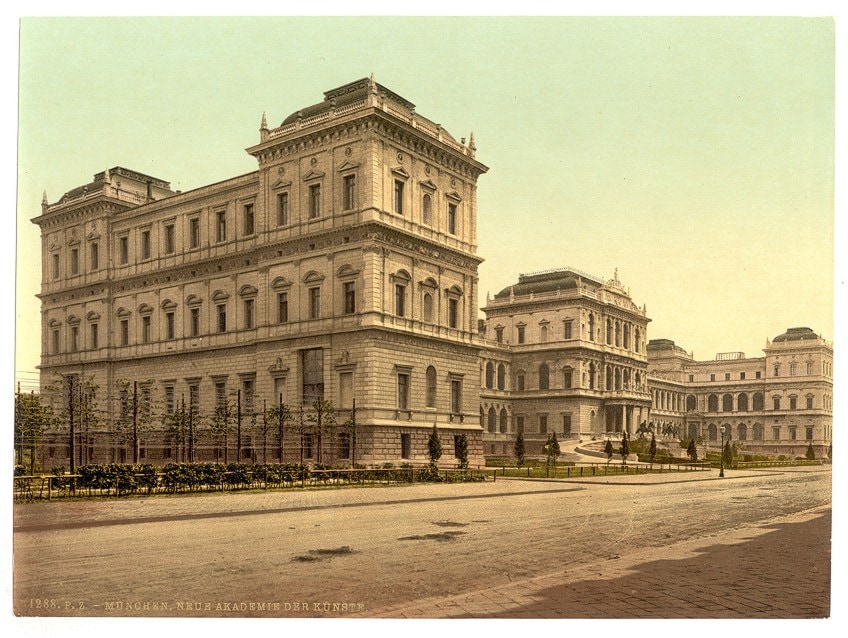
Marc also traveled to various places in Europe that exposed him to new art styles and artists, especially his trip to Paris in 1903. He was in Paris for a few months and during his time he learned about the Impressionists and their art, studied their art, and visited various art galleries and museums.
He became interested in Vincent van Gogh’s artistic oeuvre, and he also found Japanese woodblock prints, some of which he bought and brought back home.
When Marc returned to Munich, however, he reportedly did not remain in the Academy of Fine Arts. In 1906, he also traveled with his brother, Paul Marc, to several different Greek cities. But in 1907 he visited Paris again. He explored various artistic styles that were prominent in Paris at that time, for example, Paul Gauguin, Pablo Picasso, Georges Braque, and others.
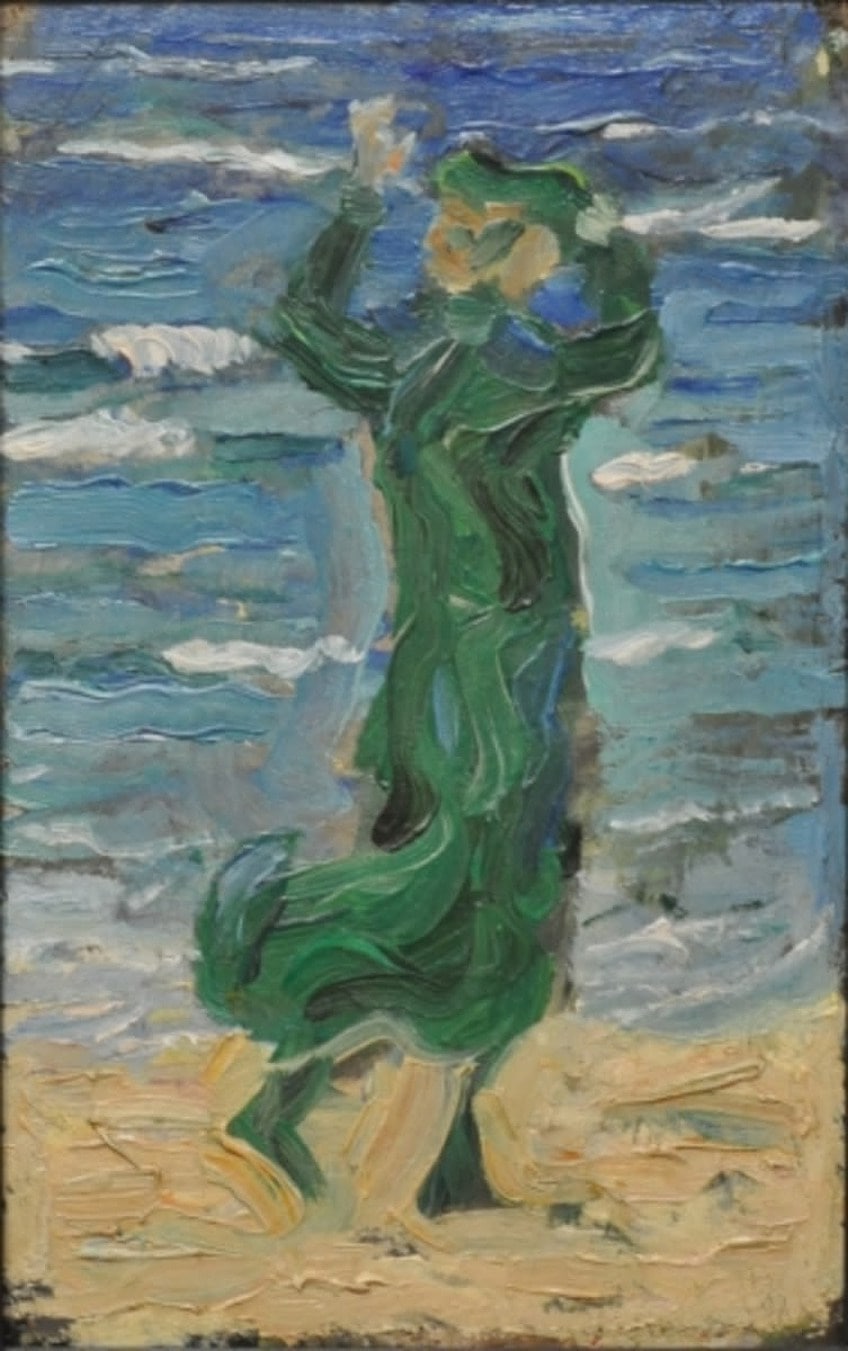
The different styles of Impressionism, Pointillism, Cubism, and Fauvism attracted Franz Marc. He apparently felt more aligned with the style and symbolism inherent in Fauvism, especially the way the Fauves utilized colors and depicted nature, which we will explain in more detail further below when we look at the artistic characteristics of Franz Marc artworks.
Der Blaue Reiter
1910 was an important year in Franz Marc’s life because this was when he met August Macke, who was also a German Expressionist artist. The two artists reportedly developed a friendship based on mutual interests in the arts; Macke was one of Franz Marc’s closest friends. During these years, Marc also made acquaintances with the Russian artist Wassily Kandinsky.
The three artists formed what became known as the German Der Blaue Reiter group, meaning “The Blue Rider”, in 1911.

Marc started the Der Blaue Reiter journal and the group was in reaction to the former group called the Neue Künstlervereinigung München (NKVM), of which Kandinsky was one of the co-founders. However, the NKVM became more “conservative” in their approaches to art, and their rejection of Kandinsky’s painting Composition V (1911) led him, as well as Franz Marc, who was a member for a short time, to start Der Blaue Reiter along with several other artists.
The Der Blaue Reiter group was about depicting and expressing spiritual aspects, but more so the idea of being free to express whatever the artists felt or believed, whether personal or universal truths of life or nature.
These aspects combined with colors became one of the leading characteristics of “The Blue Rider” group, and we will see this in the various Franz Marc paintings.
The Der Blaue Reiter name was apparently named after one of Kandinsky’s paintings titled Der Blaue Reiter (1903). However, numerous sources state that it could have derived from what Kandinsky mentioned was his affinity for riders combined with Franz Marc’s affinity for horses and a mutual affinity for blue, a color we see in many of Franz Marc’s paintings.

Meeting Robert Delaunay
Another important acquaintance to Franz Marc was Robert Delaunay, a French artist and the founder of the art movement called Orphism. Marc was influenced and inspired by Delaunay’s style, which consisted of abstracted and geometric shapes as well as bright and often described as “bold” colors.
Delaunay’s style appeared Cubist and this was evident in how Marc started to move away from more traditional representations of subject matter to more abstracted, or Cubist, subject matter.
Furthermore, the Futurist elements from Delaunay’s works also attracted Marc. We see the shift in style in numerous of Marc’s paintings like the Red Deer II (1912), The Tiger (1912), Fate of the Animals (1913), and The Tower of Blue Horses (1913).

Later Life and World War I
Franz Marc has been remembered as having a short life and career; he died when he was 36 years old. During his later years, around 1914, he was married to Maria Marc, whom he met in 1905 and only married in 1913. During 1914 Marc became an enlisted cavalryman for the Imperial German Army.
In 1916, Marc was painting military camouflage and painted several tarpaulins to deter aircraft.
He reportedly utilized a pointillist style and is widely quoted by many to have written that he painted in styles from “Manet to Kandinsky” and that the “latter” would have been a more efficient camouflage against aircraft.
It was this same year, 1916, when Marc was in the Battle of Verdun. His name was on a list of other artists who were ordered to be withdrawn from battle, but it was too late for Marc, who reportedly died on impact from a shell splinter in the head. August Macke was another artist killed on impact during the War.
Important Exhibitions by Franz Marc
Franz Marc did not have many solo exhibitions, in 1910 his first solo exhibition was held at the Brakl Gallery in Munich. Marc was assisted by the art collector Bernhard Koehler, who was also fond of his paintings.
Marc participated in other exhibitions through the Neue Künstlervereinigung München group in 1910, which was held at the Thannhauser Galleries in Munich. When the group disbanded, Marc also participated in exhibitions through the new group, Der Blaue Reiter in 1911, which was also at the Thannhauser Galleries. From 1912 to 1914, the first exhibition for Der Blaue Reiter also traveled to other countries in Europe to exhibit.
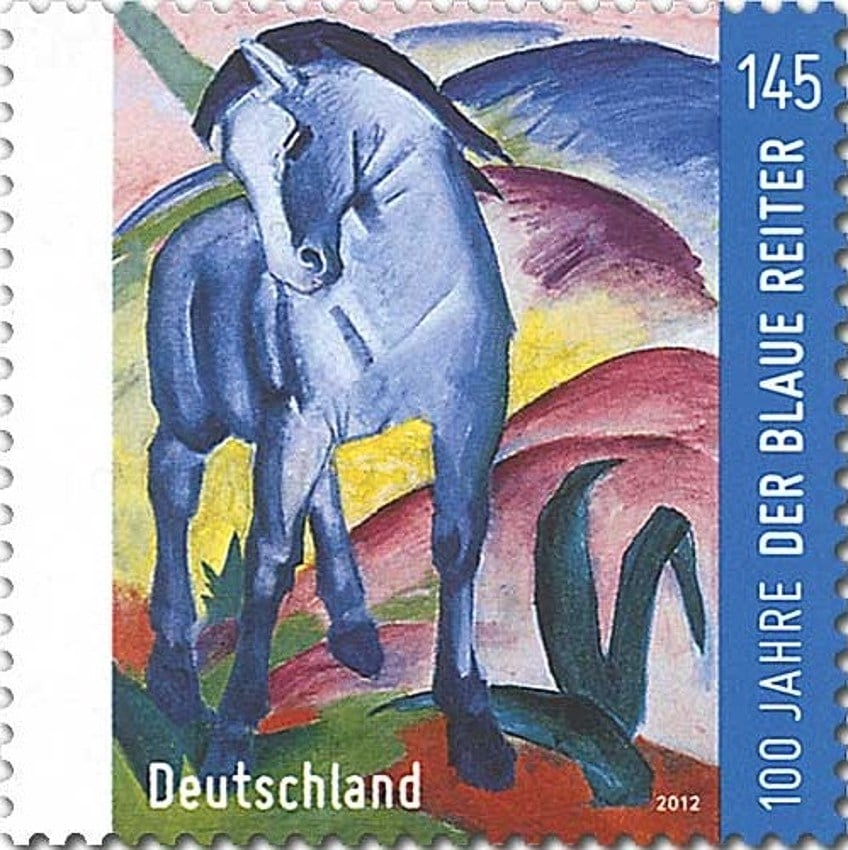
There have been other retrospective and honorary exhibitions held for Franz Marc, for example, from 4 October 2018 to 21 January 2019 the Neue Gallery New York collaborated with the Musées d’Orsay et de l’Orangerie in Paris to showcase Franz Marc and Auguste Macke: 1909 – 1914.
This exhibition was held in New York and then Paris and displayed around 70 artworks from both artists as well as drawings. It also highlighted their close friendship during the short period of years they knew each other.
The Franz Marc Museum in Kochel am See, Bavaria, Germany, displays numerous Franz Marc artworks.
It was established in 1986 and has been in dedication to the German painter and his oeuvre; there are other items that belonged to Marc including some of his personal documents and memorabilia. Furthermore, there are also artworks displayed from some of Marc’s acquaintances, for example, Wassily Kandinsky, Paul Klee, and others.
The Franz Marc Museum also held an honorary exhibition on 4 March 2016 in celebration of 100 years since Marc died. This exhibition was called Franz Marc – Between Utopia and Apocalypse and was held over three exhibitions, namely, The Poor Country of Tirol, Grazing Horses, and Fighting Forms.
Artistic Characteristics of Franz Marc
Franz Marc had a distinct artistic style, and the world has come to know his art depicting a love of animals and colors, both often becoming the subject matter of Marc’s artwork. He was attracted to applying certain colors, which held symbolic meanings.
Marc’s art connected to a deeper, spiritual, aspect inherent in life and nature, and his expressive styles showcased this.
During Marc’s earlier years as an artist, and when he studied at the Academy of Fine Art in Munich, he was exposed to the “Natural Realism” style of art, this was the most traditional way of producing artworks, and often restrictive as Marc felt. We see this style in the Franz Marc portrait of his mother, titled Portrait of the Artist’s Mother (1902).

He also reportedly enjoyed the more expressive forms created by the Jugendstil art style, otherwise known as Art Nouveau, which was prominent at the time he studied. The art created was more fluid with flowing forms and lines, and designs were geometric and organic in their depictions.
Animals and Pantheism
Marc experimented with the Art Nouveau style in his early years, which would have been during his 20s. But when he traveled to Paris his style changed, marked by his painting Two Women on a Hillside (1906), which depicts a more expressive utilization of loose brush strokes.
We can notice the influence from the Post-Impressionistic style, but also the characteristic “linearity” that Marc used to create a fluid expression of form and color.
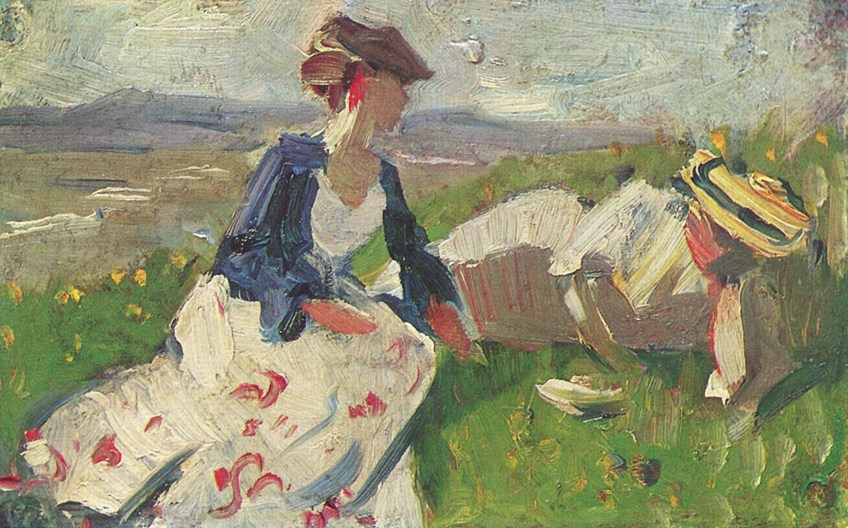
Another example includes the Franz Marc portrait, painted by the artist himself, also in a characteristic Impressionist style. Titled Self-Portrait (1905), it depicts Marc looking towards his left (our right) wearing a Breton outfit. He appears to be standing as if he is just about to move. There is also a level of expressiveness in the manner of painting here; Marc seemingly created a fluid composition of similar colors – primarily blues – without too much attention to detail as we would find from the more traditional natural portrayals of figures.
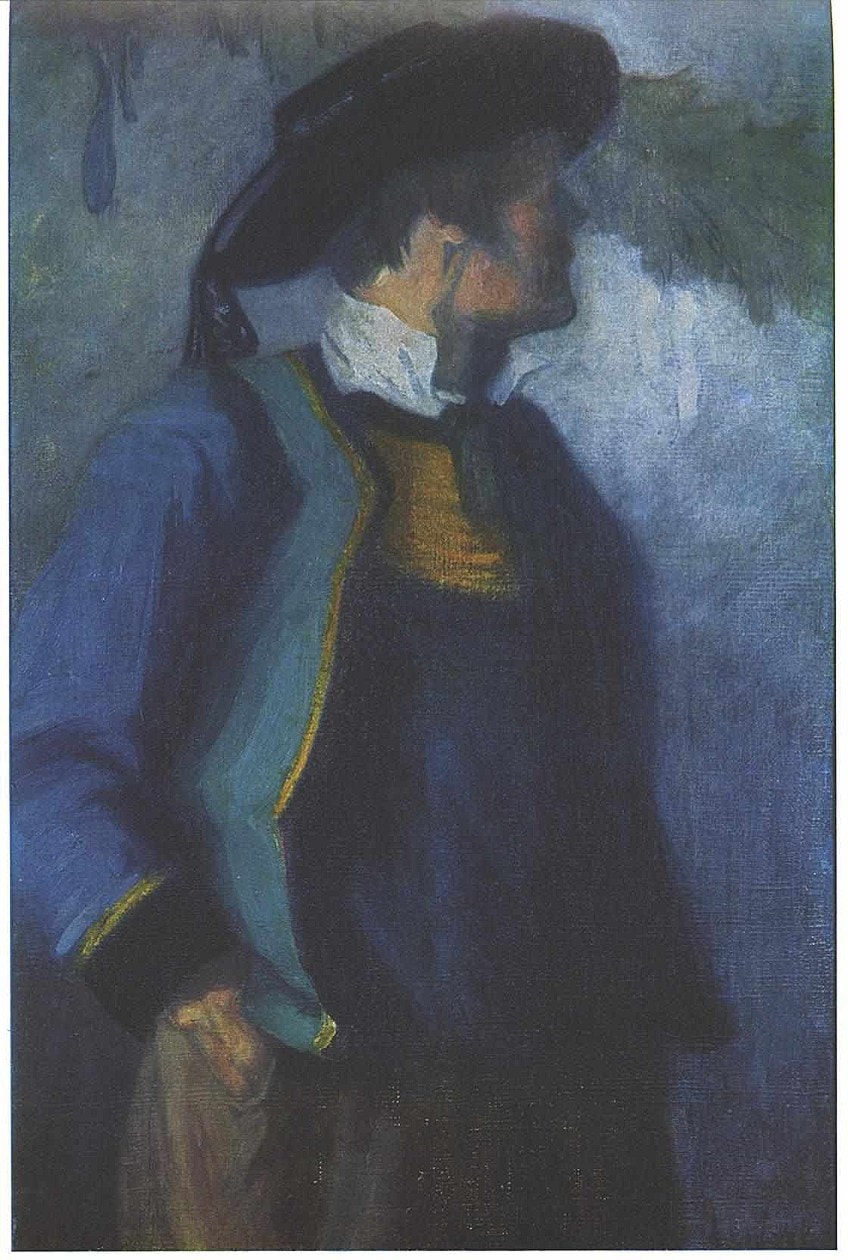
Some sources also point out that the Swiss painter Jea-Bloé Niestle influenced Marc’s inclusion of animals in his paintings because Niestle’s artworks primarily depicted animals. What Niestle helped Marc with was to portray animals from their point of view.
Marc also studied animal anatomy to become more acquainted with their form.
He was inspired by the Fauves’ style of art and how they applied color as expressions of their forms, as we noted earlier in the article. For Franz Marc, it was bridging that gap between the naturalistic and traditional depictions of form to create art that depicted what he desired to express from his inner world and from a deeper, more primitive, place.
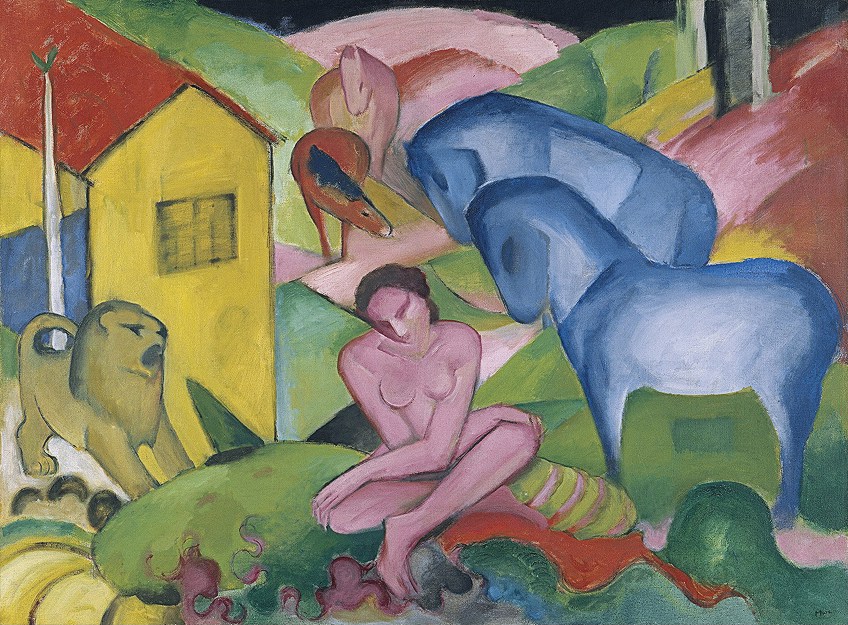
Franz Marc’s depiction of animals was closely tied to his pantheistic beliefs. We see many of his animals in nature and as many sources state, in their “natural habitat”. Pantheism refers to the concept that God is in all things in the universe and nature. The word itself originates from the Greek words, pan, which means “all” and theos, which means “God” or “Divine” in English.
Marc’s animals became primitive depictions from the animals’ perspectives.
He moved away from depicting how humans saw the world, even how humans were depicted in their primitive habitats as was often the case in the early Modern art styles. Marc has been quoted as writing from one of his letters about his disdainful feelings towards man and modernity, explaining that animals “with their virginal sense of life awakened all that is good in me”.
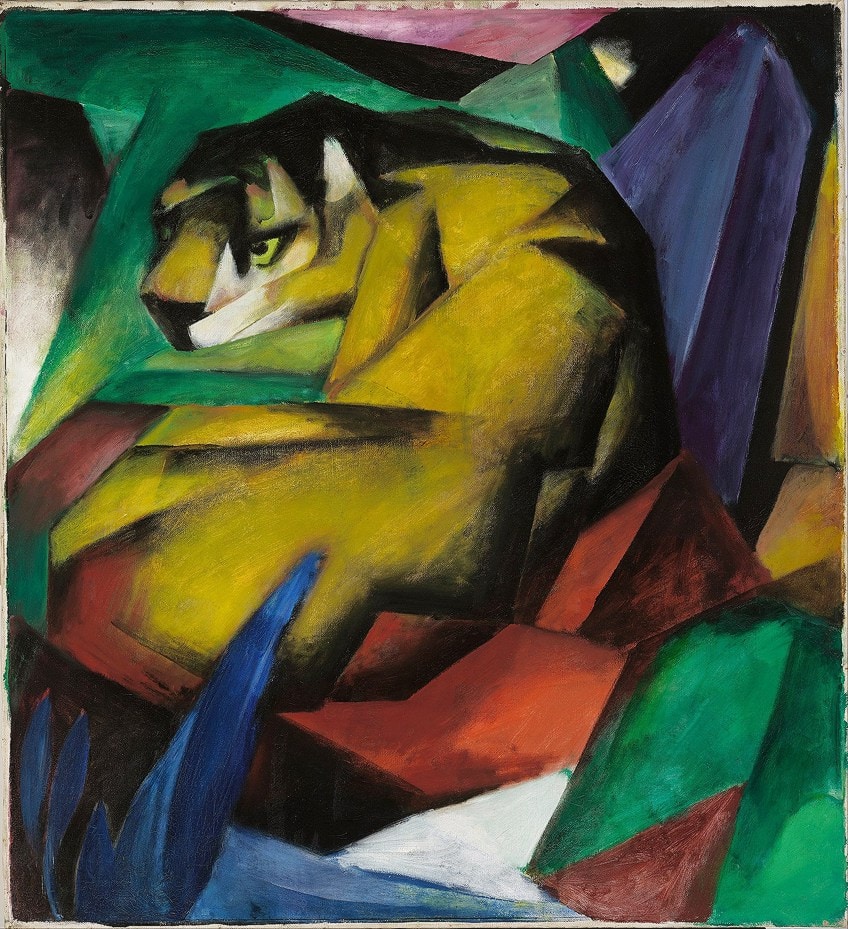
In the publication by Herschel B. Chipp, Theories of Modern Art (1968), we can find the essay by Franz Marc, titled, How Does a Horse See the World? Marc is often quoted from this essay, which gives us a better understanding of what he perceived and felt. In it, he asked:
“Is there a more mysterious idea for an artist than to imagine how nature is reflected in the eyes of an animal? How does a horse see the world, how does an eagle, a doe, or a dog? It is a poverty-stricken convention to place animals into landscapes as seen by men; instead, we should contemplate the soul of the animal to divine its way of sight.”
Common examples of this are Marc’s Blue Horse I (Blaues Pferd I) (1911), Fox (1911), The Little Blue Horses (1911), the Large Blue Horses (1912), The Red Bull (1912), The Dream (1912), The Little Monkey (1912), The Tiger (1912), The Foxes (1913), and The World Cow (1913), to name a few.

In all of the above-mentioned paintings, we see a variety of different animals depicted in their natural environments, some surrounded by vast landscapes of mountains and others appearing to be in forested jungle environments.
For example, in “Large Blue Horses”, Marc depicts three horses standing with their heads downwards, appearing to be grooming themselves, although we cannot see the face of the farthest horse.
The background depicts a vast landscape and what we understand to be the hills in the distance are depicted in rounded and curved lines, which are similarly depicted in the shapes of the horses in the foreground. We will notice beautiful contours lines that mark muscular areas on the horses’ backs, necks, legs, as well as their manes of hair on their long curving necks.
Color Symbolism
If we look at Marc’s Yellow Cow (1911), we again see the rhythmic flow of lines, especially in the cow’s body posture, stretched out and jumping. There is a strong sense of dynamism in this composition. The background depicts another vast landscape with pointed-peaked mountains in the distance.
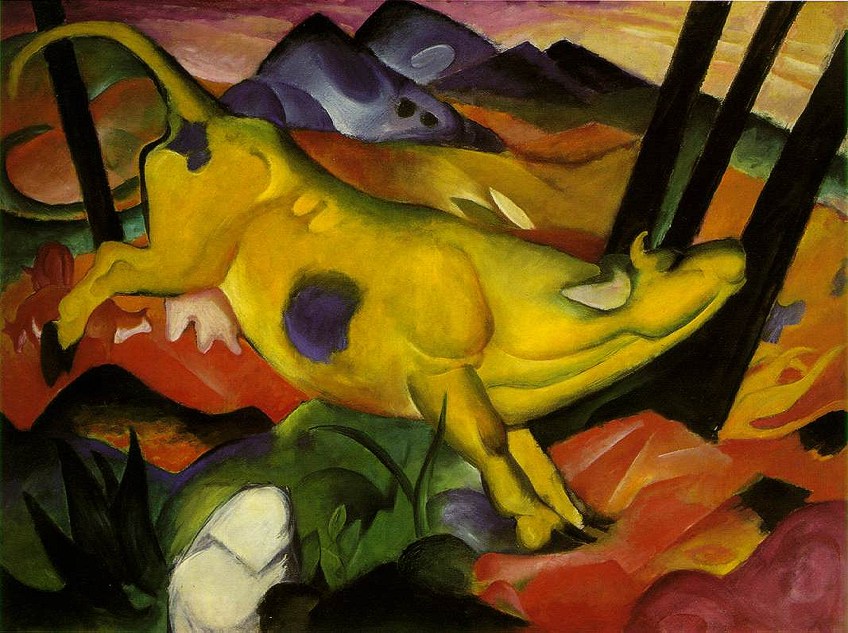
We see an undulation of lines that form the landscape in between the cow and the mountains, and it is clear to us that Marc is playing on form and line here, furthermore, there are three – one on the left and two on the right – black protrusions forming strong vertical lines to both sides of the composition, almost breaking the strong horizontality.
What is important about this painting, and almost all of Marc’s paintings is his utilization of color.
In Yellow Cow, we know that a yellow cow is not a naturally-occurring animal, so Marc makes it clear to us through color that there is more to the cow than our traditional knowledge of cows, which are usually brown or white.
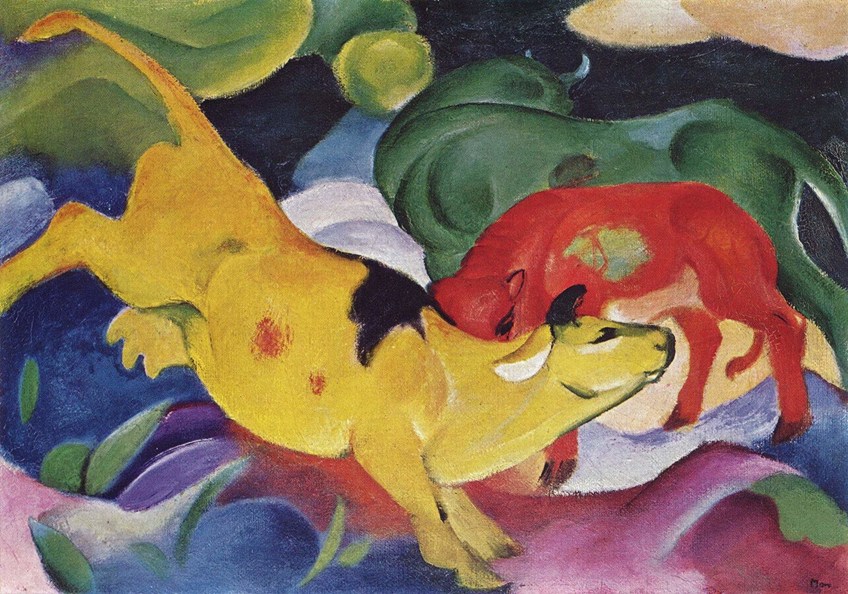
Coloring was one of Franz Marc’s most important artistic tools, so to say. He felt that color symbolized different aspects. He wrote about how he perceived the different feelings from colors in a letter to August Macke dated 12 December 1910. He wrote that “blue is the male principle, severe and spiritual. Yellow is the female principle, gentle, cheerful and sensual. Red is matter, brutal and heavy”.
We will notice Marc applied these primary colors in large areas of his paintings, notably his animals. It undoubtedly evoked and still evokes certain emotions through its expression, as we see in the Yellow Cow or Marc’s popular blue horses.
From Beautiful to Ugly: An Abstracted Perception
Importantly, Marc also had another perception that contrasted how he perceived animals and the natural world as more “pure” and people as “ugly”. In a letter addressed to “L” on 12 April 1915, he explained his feelings:
“Very early I found people to be ugly; animals seemed more beautiful, more pure. But then I discovered in them, too, so much that was ugly and unfeeling – and instinctively, by an inner compulsion, my presentation became more schematic or more abstract.”
He continued to explain how nature, “trees, flowers, the earth” showed him more of its “deformity and repulsiveness”. He also questioned whether it was their “European point of view that makes the world look poisoned and distorted”.

Marc’s turn to abstraction can be noticed in his later paintings called Playing Forms (or Forms at Play) (1914), Fighting Forms (1914), Cheerful Forms (1914), and Broken Forms (1914). Additionally, in some of Marc’s works from the year before, for example, The Tower of Blue Horses (1913) and Fate of the Animals (1913) we see the element of how he abstracts animals.

Importantly, he depicts his animals entangled in a sense of chaos compared to the beauty and “harmony” from previous works. It is almost as if Marc’s animals have fallen prey to the artist’s abstraction and distortion of lines and color, and really his perception of the “deformity” of the natural world.
Inevitably, these paintings could have also been representations of the chaos from the war and its destructive nature. However, some sources also note that Marc felt the war would be purging.
Franz Marc Paintings
| Title | Date | Dimensions | Medium |
| Portrait of the Artist’s Mother | 1902 | 98.43 x 69.85 centimeters | Oil on canvas |
| Two Women on the Hillside | 1906 | 15.5 x 24.7 centimeters | Oil on canvas |
| Woman in the Wind By the Sea | 1907 | 25 x 16 centimeters | Oil painting |
| Monkey Frieze | 1911 | 135.5 x 75.5 centimeters | Oil on canvas |
| Blue-Black Fox | 1911 | 63 x 50 centimeters | Oil on canvas |
| The Yellow Cow | 1911 | 140 x 190 centimeters | Oil on canvas |
| The Steer (The Bull) | 1911 | 101 x 135 centimeters | Oil on canvas |
| The Large Blue Horses | 1911 | 104.78 x 181.61 centimeters | Oil on canvas |
| Blue Horse I | 1911 | 112.5 x 84.5 centimeters | Oil on canvas |
| Girl with Cat II | 1912 | 71.5 x 66.5 centimeters | Oil on canvas |
| Little Yellow Horses | 1912 | 66 x 104 centimeters | Oil on canvas |
| In the Rain | 1912 | 81 x 106 centimeters | Oil on canvas |
| Tiger | 1912 | 109 x 99 centimeters | Oil on canvas |
| The Tower of Blue Horses | 1913 | 200 x 130 centimeters | Oil on canvas |
| The Fate of the Animals | 1913 | 194.3 x 261.6 centimeters | Oil on canvas |
| Animals in Landscape | 1914 | 99.7 x 110.2 centimeters | Oil on canvas |
| Deer in the Forest II | 1914 | 110 x 100.5 centimeters | Oil on canvas |
| Fighting Forms | 1914 | 91 x 131 centimeters | Oil on canvas |
| Broken Forms | 1914 | 112 x 84.5 centimeters | Oil on canvas |
| Tyrol | 1914 | 135.7 x 144.5 centimeters | Oil on canvas |
Book Recommendations
Below we outline three book recommendations about Franz March and his artworks. Whether you are merely an art enthusiast, an avid art lover, or a scholar researching more about Marc and Der Blaue Reiter these will help you along your way.
Theories of Modern Art: A Source Book by Artists and Critics (1968) by Herschel B. Chipp
This is a valuable art-historical resource not only for art enthusiasts but also those who need to delve deeper into research about various artists and art movements from the 20th century. It includes firsthand accounts from artists ranging from Post-Impressionism, Expressionism, Symbolism, Contemporary art, and more. For anyone who wants to read from letters and essays by Franz Marc and some of his other artist friends, this will make a valuable addition to your art collection.
- A collection of texts from letters, manifestos, notes, and interviews
- Sources include a variety of artists, critics, and political figures
- A wonderful resource and insight into the way artists think and work
Franz Marc: Horses (2000) by Andreas Schalhorn et al.
This hardcover provides various illustrations from Franz Marc during his early life as an artist to his later life. It includes paintings, drawings, and other artworks by the German painter. There are over 200 illustrations with essays that focus on the topic of the horse as one of Franz Marc’s main subject matter. This book is not only a good choice for Franz Marc fans but is also an inspiring resource for those who love to paint animals, especially horses.
- An overview of Marc's paintings, drawings, gouaches, and more
- With 231 illustrations and a series of essays on the artist
- A discussion of Marc's unique adaptations of various media
Franz Marc and August Macke: 1909 – 1914 (2018) by Vivian Endicott Barnett
This is a hardcover, with over 200 pages that explore the friendship between Franz Marc and August Macke when they met until their death. It offers a variety of illustrations of artwork from both artists as well as written work about different aspects the two artists experienced in their lives and their art, for example, the “Blue Rider Group”, their views on color, non-representational aspects in their art, and so much more.
- Illustrated volume on the friendship of Franz Marc and August Macke
- Includes paintings, drawings, and documents from both artists
- Explores the artists' influence on the Expressionism movement
Franz Marc Making His Mark on the World
Franz Marc left his mark on the world of Modern art and set the tone for many other artists and art movements to come. For example, the Abstract Expressionist style inspired by Franz Marc, with artists like Jackson Pollock, clearly explored deeper realms of expression that moved beyond what has been referred to as “representational”.
Marc gave the idea of “representational” art another meaning through his use of non-local colors on his subject matter, especially his animals. Through his need to express how he felt and perceived nature to be he gave others the impetus to do the same. Marc was a German painter unlike any other and we will always know when we see blue horses that there is more to the story.
Take a look at our Franz Marc paintings webstory here!
Frequently Asked Questions
Who Painted the Blue Horse Paintings?
The famous paintings with blue horses were done by the German painter Franz Marc. He painted oil on canvas titled, Blue Horses otherwise also called The Large Blue Horses (1911).
How Did Franz Marc Die?
Franz Marc was killed on 4 March 1916, which was during the time he served in World War I, at the Battle of Verdun. He reportedly died instantly due to shrapnel that hit him in the head.
What Were the Art Styles Inspired By Franz Marc?
Franz Marc left a legacy that would inspire and influence many modern artists, especially artists from art movements like Expressionism, Abstraction, and Color Field Painting. Notable artists include the Abstract Expressionists Jackson Pollock and Willem de Kooning.
Isabella studied at the University of Cape Town in South Africa and graduated with a Bachelor of Arts majoring in English Literature & Language and Psychology. Throughout her undergraduate years, she took Art History as an additional subject and absolutely loved it. Building on from her art history knowledge that began in high school, art has always been a particular area of fascination for her. From learning about artworks previously unknown to her, or sharpening her existing understanding of specific works, the ability to continue learning within this interesting sphere excites her greatly.
Her focal points of interest in art history encompass profiling specific artists and art movements, as it is these areas where she is able to really dig deep into the rich narrative of the art world. Additionally, she particularly enjoys exploring the different artistic styles of the 20th century, as well as the important impact that female artists have had on the development of art history.
Learn more about Isabella Meyer and the Art in Context Team.
Cite this Article
Isabella, Meyer, “Franz Marc – A Brief Look at This Famous German Painter.” Art in Context. November 29, 2021. URL: https://artincontext.org/franz-marc/
Meyer, I. (2021, 29 November). Franz Marc – A Brief Look at This Famous German Painter. Art in Context. https://artincontext.org/franz-marc/
Meyer, Isabella. “Franz Marc – A Brief Look at This Famous German Painter.” Art in Context, November 29, 2021. https://artincontext.org/franz-marc/.


